Airlines warned not to bar disabled
Steve Creedy, Aviation writer | December 11, 2007
LOW-COST carriers have been warned not to attempt to cut costs by discriminating against the disabled after two airlines recently sought exemptions from laws designed to grant handicapped travellers equal access to transport.
Singapore-backed Tiger Airways has applied to the Human Rights and Equal Opportunity Commission for an exemption to the Disability Act so it cantemporarily refuse to carry some passengers with limited mobility.
It says it needs to do this because it does not have the equipment to get wheelchair-bound people safely on to its Airbus A320 jets.
Disability groups are also fighting a move by Australia’s biggest independent regional carrier, Regional Express (Rex), to introduce restrictions they say will make flying harder for disabled people in the bush.
The Public Interest Advocacy Centre is pursuing court action against Virgin Blue to head off moves to require some people with disabilities to buy a second ticket for a carer if they want to travel.
“It’s fine for low-cost or budget airlines to reduce services,” human rights commissioner Graeme Innes said yesterday. “But not carrying passengers with disabilities can’t be part of those reductions and to do so is against the law.
“As commissioner, I intend to ensure wherever I can that airlines meet their obligations to all passengers, not just passengers without disabilities.”
Tiger is offering affected passengers a full refund and says the problem stems from the inability of its third-party ground handler to obtain special hydraulic devices capable of lifting wheelchairs on to planes. It did not expect the lifters to be available at all destinations until the end of February.
Tiger’s application comes as a report, due to be released this week by the PIAC, says an analysis of the experiences of 110 airline passengers demonstrates a systemic failure of legislation introduced in 2002 to set standards for disabled access to public transport.
The report finds recent development and application of airline policy, and changes to baggage handling, have made disabled access more difficult, particularly for people with motorised or bigger wheelchairs.
“Some passengers who travelled independently for many years now find themselves barred from travel or facing the imposition of unreasonable conditions,” it says.
Category: AirAsia
BEAT At AirAsia Academy
Eleven members from the training team of the Barrier-free Environment and Accessible Transport Group (BEAT) had a meeting with trainers from AirAsia last Saturday. It was held at the AirAsia Academy in Sepang. We were there to get a clearer picture of how BEAT can draw up training modules to fit into AirAsia’s existing training for its staff. After the meeting we were given a tour of the Academy, especially the flight simulator complex.
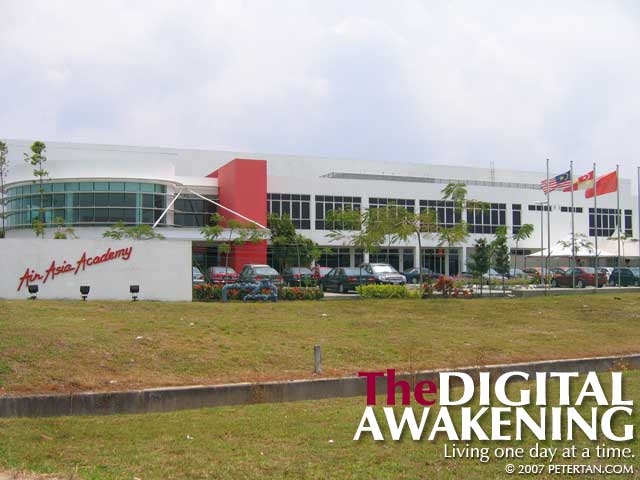
AirAsia Academy at Sepang.
Photo by Wuan.
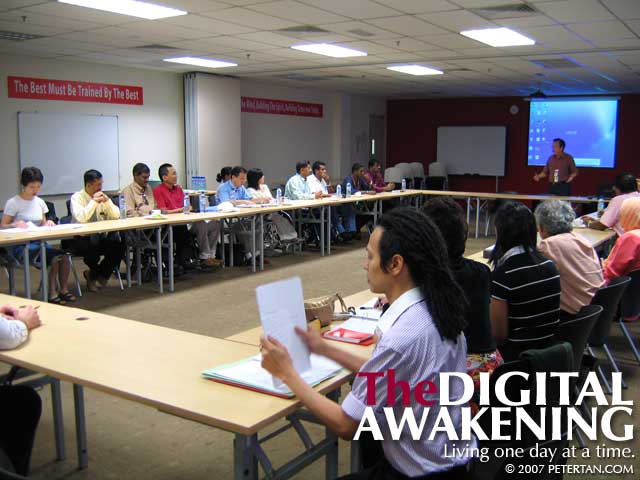
BEAT and AirAsia Academy staff inside the meeting room.
Photo by Wuan.
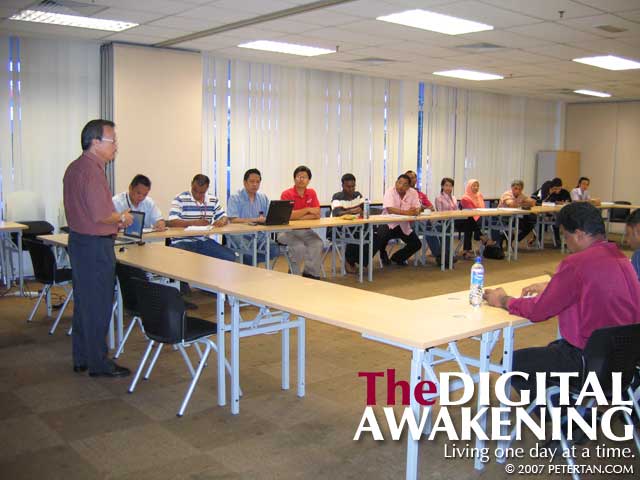
BEAT and AirAsia Academy staff inside the meeting room.
Photo by Wuan.

Mural on the corridor at AirAsia Academy.
Photo by Wuan.
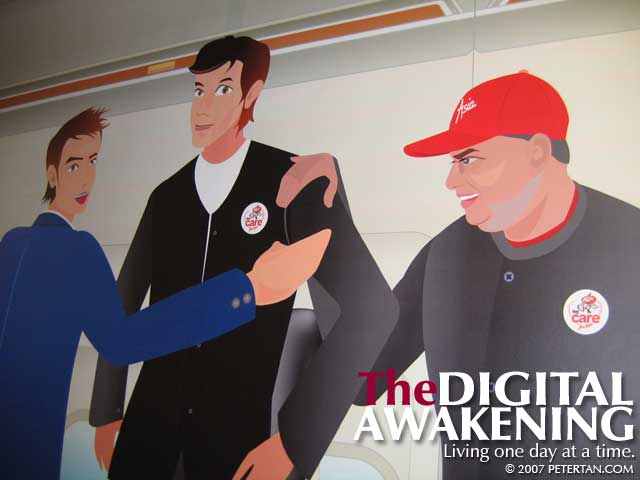
Mural of a familiar face at the corridor of AirAsia Academy.
Photo by Wuan.
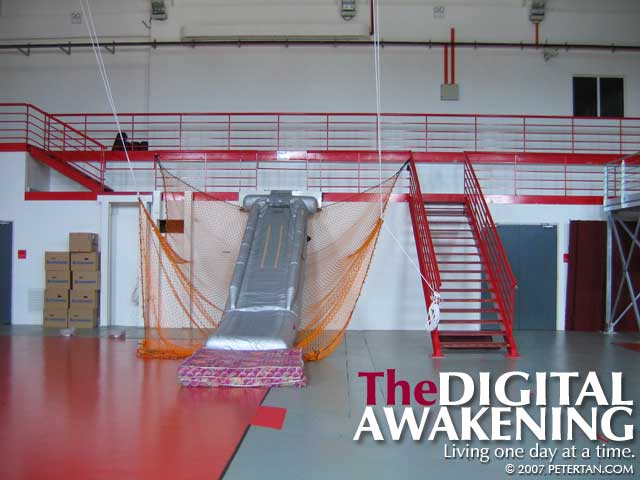
Emergency evacuation slide for a Boeing 737.
Photo by Wuan.
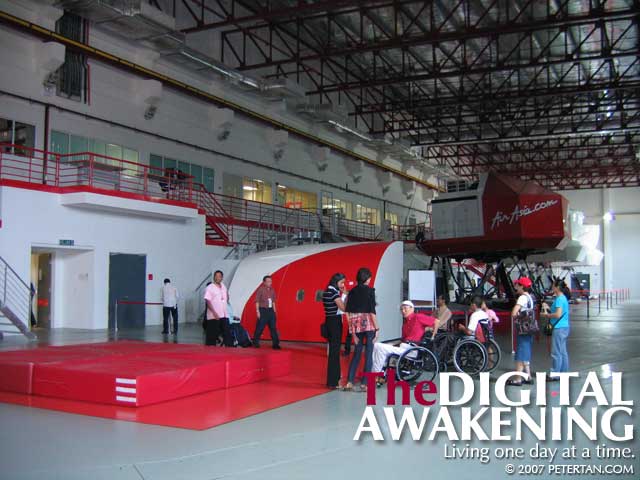
AirAsia Flight Simulator Complex.
Photo by Wuan.
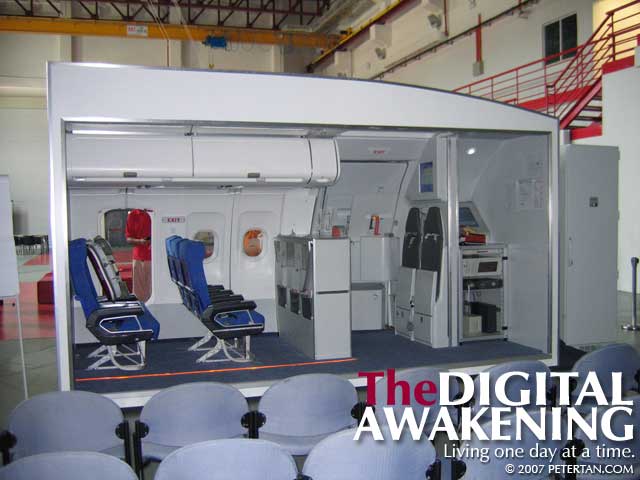
Mock-up of an aircraft cabin with a real Airbus A320 door for training at AirAsia Academy.
Photo by Wuan.
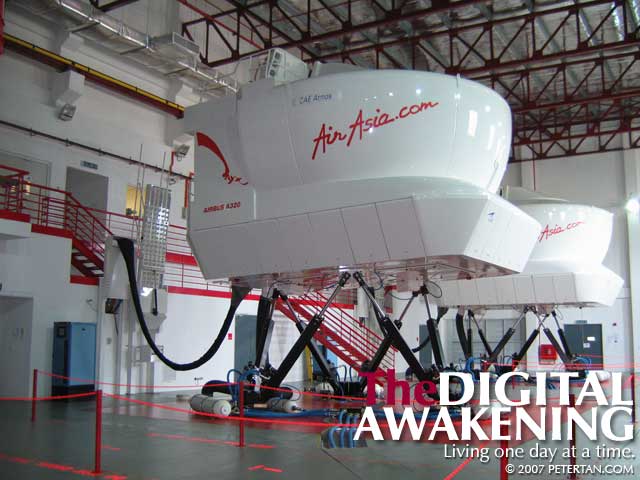
Airbus A320 flight simulators at AirAsia Academy.
Photo by Wuan.
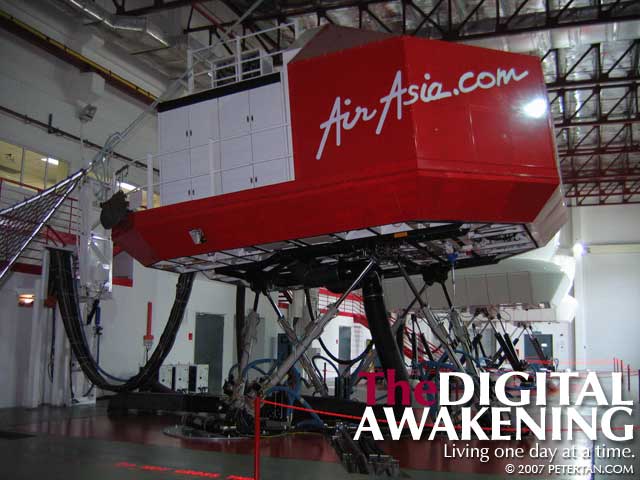
Boeing 737 flight simulator at AirAsia Academy.
Photo by Wuan.
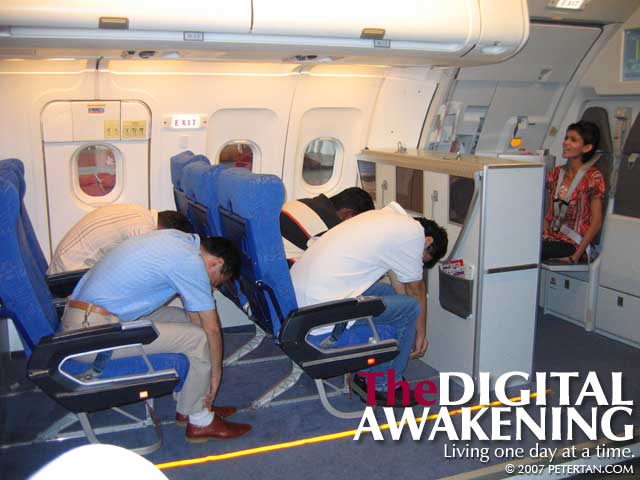
Ms. Farhana of AirAsia Academy demonstrating an emergency drill.
Photo by Wuan.
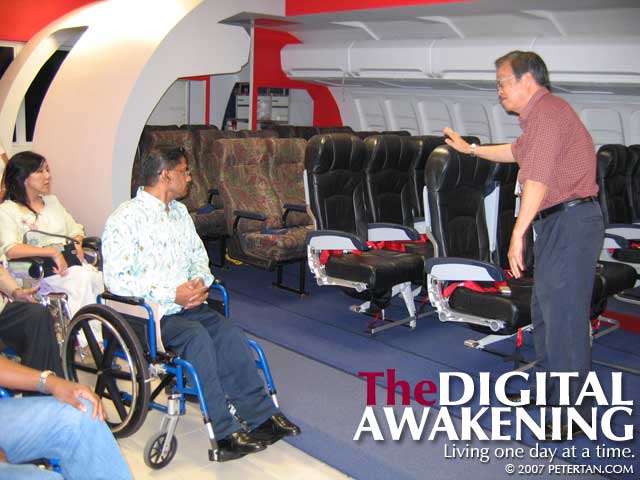
Captain Kenneth Chong explaining the mock-up of a Boeing 737 cabin used for training.
Photo by Wuan.
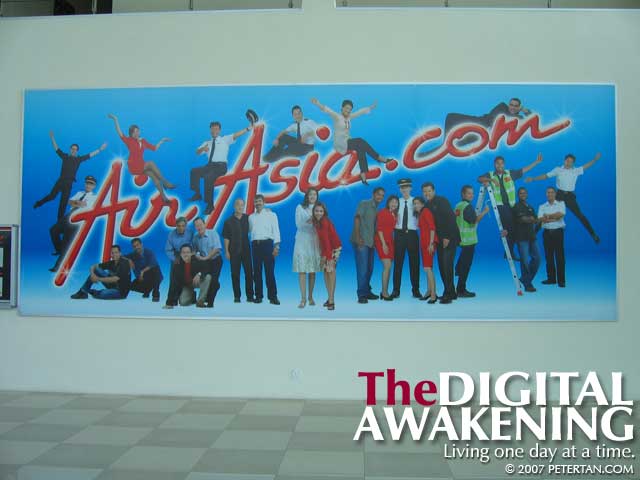
Poster at the AirAsia Academy lounge.
Photo by Wuan.
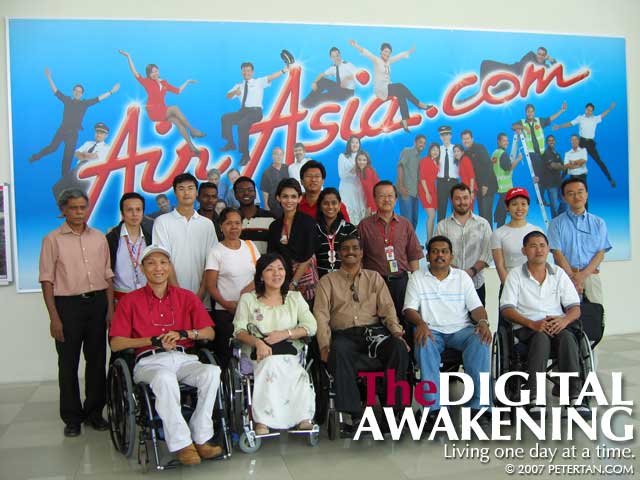
Group photo of BEAT members and staff of AirAsia Academy.
Photo by Wuan.
AirAsia – Aisle Chair In Every Aircraft
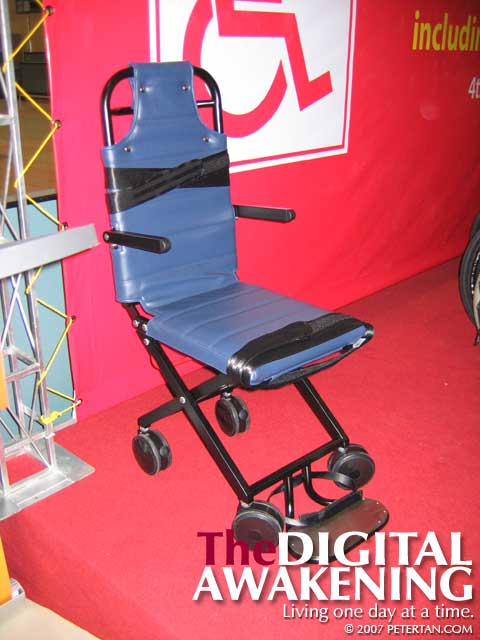
Model of the aisle chair that AirAsia will equip all its aircraft with.
Photo by Wuan.
A wheelchair user nicely tucked in an airplane seat would feel pretty helpless without the means to move around. Never mind that the seat is luxuriously leather. On long-haul flights, I usually inform the airline of my needs well in advance to ensure that they are prepared. For me, one of the most useful piece of equipment inside an aircraft is an aisle chair. I need that to get to the toilet. The aisle chair is also important for me to get into and out of aircrafts at the airport.
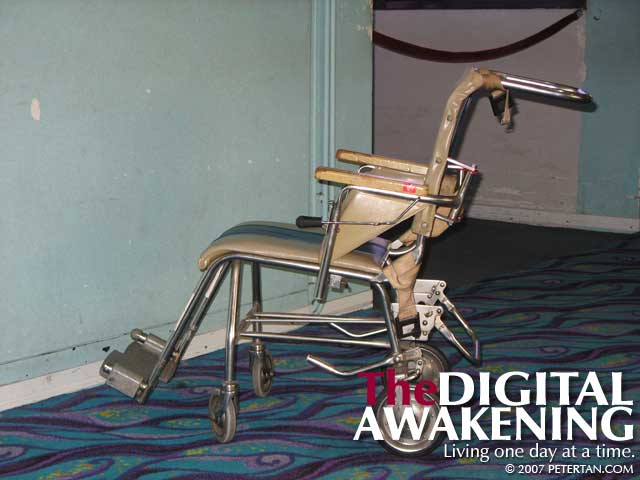
Malaysia Airlines aisle chair at Penang International Airport for moving passengers from the airport into the aircraft.
Therefore it was great news for wheelchair users and those with reduced mobility when AirAsia Group Chief Executive Director Dato’ Tony Fernandes announced that all of AirAsia’s planes will be equipped with at least one aisle chair. This will clear a lot of anxieties for disabled passengers who need mobility inside aircrafts to empty their bladder in the privacy of the toilets.
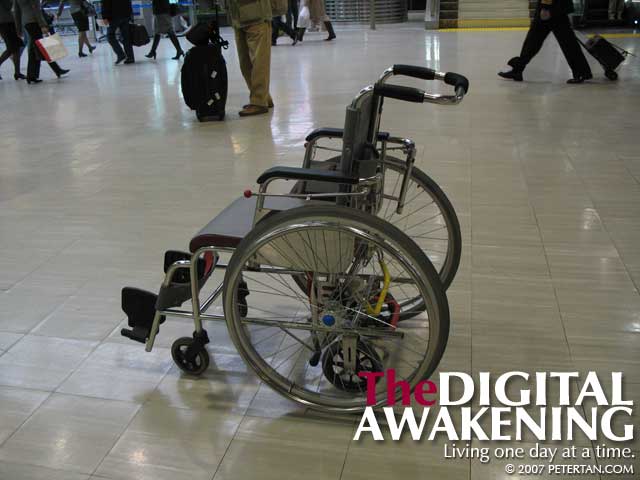
Japan Airlines aisle chair at Narita International Airport for moving passengers from the airport into the aircraft.
The aisle chair is actually a wheelchair without the large back wheels that we normally see. Small casters are used in place. It has a narrow seat and high back to fit into the narrow aisles inside aircrafts. The chair has 2 straps – one a diagonal restraint for the torso and the other to keep the legs close together. It is not a comfortable thing to be in but is essential for mobility. The chair is also very portable and easily foldable into very compact configurations for easy storage.
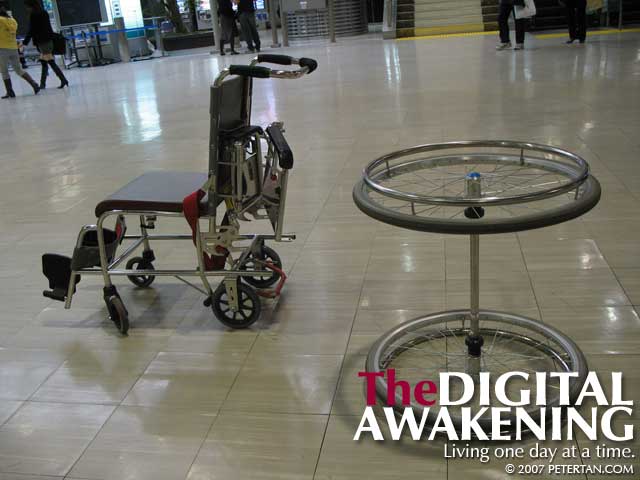
Japan Airlines aisle chair at Narita International Airport with the large wheels removed.
